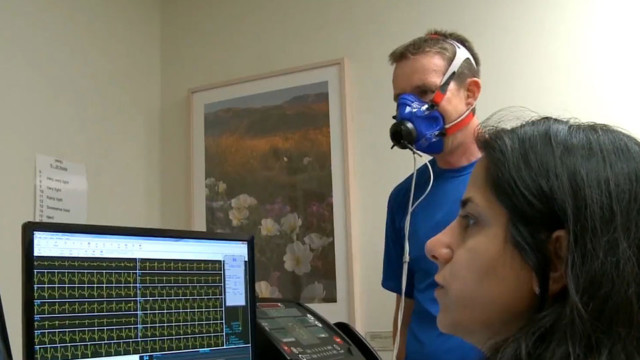Elite athletes at Stanford University are working-up a sweat in the name of science. Researchers are studying the high performers, trying to unlock secrets that may be hidden in their DNA.
CGTN’s Mark Niu reports.
Even some superstar athletes would likely fail to qualify for Stanford’s Elite Athlete Project. Researchers are looking to study only the most aerobically fit of the fit: .001 percent of the population.
At Stanford University Medical Center in California, cyclist and runner James Mattis is giving it a try.
The test starts out slow, but quickly picks up intensity. Scientists want to know James’ peak VO2, or how much oxygen he can use during this rigorous test.
His score comes out to 58.7, which the doctor calls “awesome.” But the score still falls short of the necessary 75 for men and 63 for women.
Of the participants, 28 percent are runners, 23 percent cross-country skiers, 20 percent cyclists, and then biathletes, triathletes, and rowers.

“One of the most interesting things is that it’s not necessarily all the people who are winning all the gold medals,” according to Dr. Euan Ashley, a Stanford University cardiologist. “There are also people with these kinds of abilities that are walking around among us. Kind of an interesting thought that there are people who’ve never competed in anything.”
Ashely is leading the project examining the DNA of those athletes.
The process starts with a blood sample that researchers transform into a stem cell, which has the ability to transform into any type of cell in the body. In this study, they’re interested in heart and skeletal muscle cells.
“The ability to have a stem cell from an athlete and turn it into those cells means we can study the variants we find from the genome sequencing,” Ashley explained.
With a focus on the heart, lungs and the oxygen delivery system, researchers hope to pinpoint genetic variations of the super human. By doing so, they hope to someday create drugs that mimic those healthy traits to combat heart disease.
It’s taken a decade to find about 1,000 elite athlete subjects, but researchers are quickly expanding and collaborating with partners in eleven countries. All in the quest to find the fittest on the planet.
 CGTN America
CGTN America
